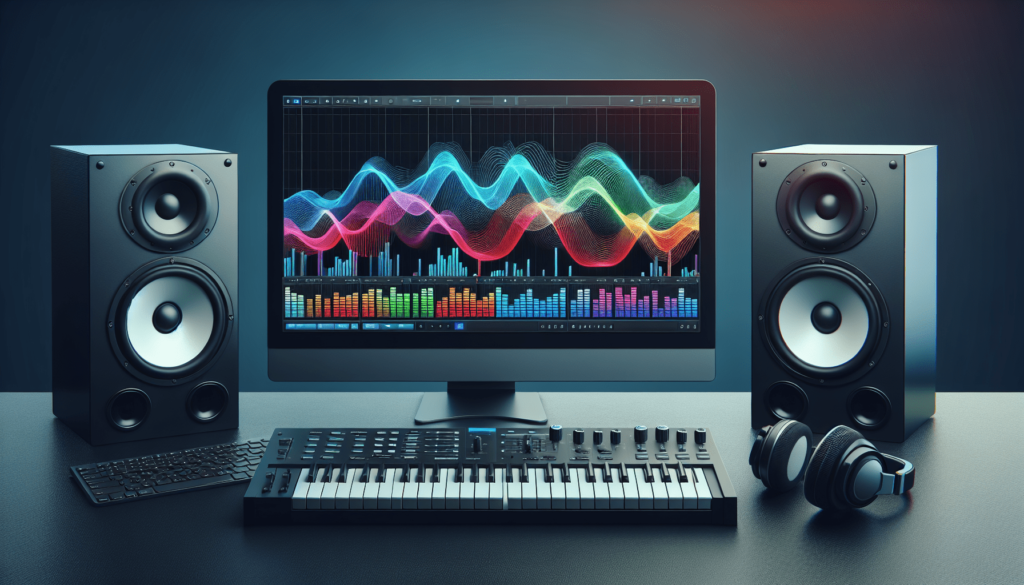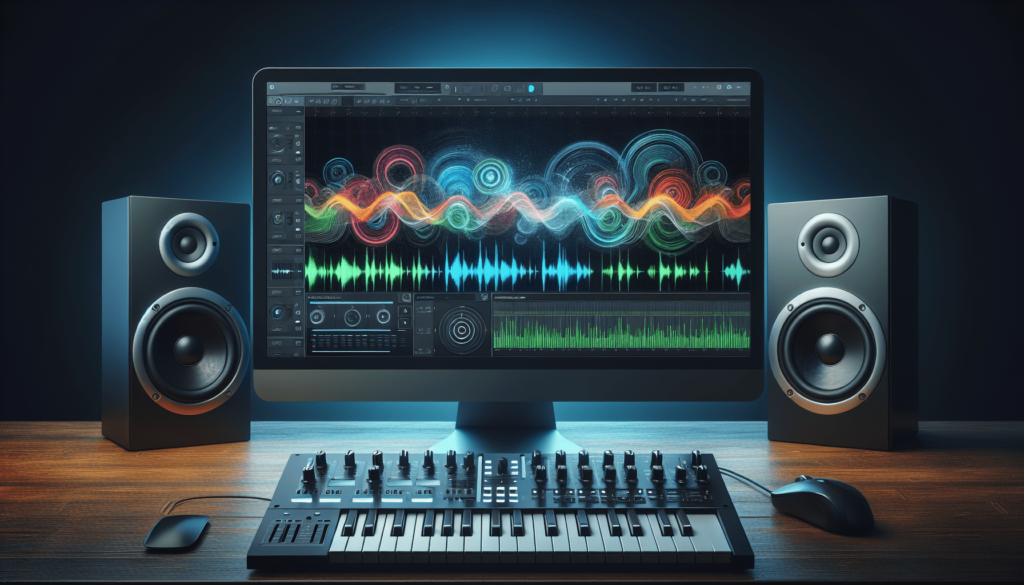Have you ever wondered how you can transform your musical ideas into polished tracks using Logic Pro? If you’re ready to take your music production skills to the next level, you’ve come to the right place. This article will guide you through mastering music production with Logic Pro, helping you unlock your creativity and enhance your technical skills.
Understanding Logic Pro
Logic Pro is a digital audio workstation that offers a powerful suite of tools for music production, making it a favorite among professionals and hobbyists alike. Its user-friendly interface and extensive features allow you to compose, arrange, edit, and mix music with ease.
The Interface
One of the first things you’ll notice about Logic Pro is its clean and intuitive interface. Familiarizing yourself with key elements, such as the toolbar, tracks area, and mixer, will streamline your workflow.
| Component | Description |
|---|---|
| Tracks Area | Where you arrange your audio and MIDI tracks. |
| Mixer | Controls the volume, panning, and effects for each track. |
| Toolbar | Quick access to tools for editing and arrangement. |
Understanding where to find everything will help you navigate through your projects more smoothly.
Key Features
Logic Pro comes packed with features designed for both beginners and advanced producers. Here are some notable ones:
- MIDI Editing: Allows you to customize MIDI information effectively.
- Audio Recording: Record live instruments or vocals seamlessly.
- Virtual Instruments: Includes a wide range of high-quality sounds and software instruments.
Familiarizing yourself with these features can help you discover new ways to express your musical ideas.
Setting Up Your Project
Before you start making music, it’s crucial to set up your project correctly. This step can save you a lot of time in the long run.
Creating a New Project
To create a new project, simply select File > New from the menu. You’ll be given several options for project templates, which can include:
- Empty Project: Start fresh and build your setup from scratch.
- Electronic: Ideal for electronic music with pre-set tracks and instruments.
- Hip Hop: Designed specifically for hip hop production.
Choosing the right template can help you focus your creativity from the get-go.
Project Settings
Once your project is created, go to File > Project Settings. Here, you can adjust the tempo, time signature, and audio settings. Setting these parameters early will ensure that everything aligns perfectly as you develop your track.

Composing Your Track
With your project set up, it’s time to start composing. This is where the magic happens!
Utilizing MIDI Instruments
MIDI instruments are versatile tools that allow you to create music without needing to record live performances. Here’s how to get started:
- Add a New Software Instrument Track: Click the “+” button in the Tracks area and select “Software Instrument.”
- Choose an Instrument: Browse through the extensive library of virtual instruments, from synthesizers to orchestral sounds.
By experimenting with different instruments, you can find unique sounds that resonate with your musical vision.
Recording MIDI
Once you’ve chosen your instrument, it’s time to record. Press the record button and start playing. Don’t worry if you make mistakes; you can edit your performance later.
When recording, remember to:
- Use Quantization: This can align your notes to the nearest beat, making your performance tighter.
- Layer Tracks: Create depth by layering different MIDI tracks to enhance your composition.
Editing MIDI
After recording, editing is the next step. In the Piano Roll view, you can:
- Adjust Note Lengths: Make notes longer or shorter to fit your rhythm.
- Shift Notes: Move notes around to create interesting melodies.
- Change Velocity: Adjust the velocity of each note to add dynamics to your piece.
Editing allows for fine-tuning that can elevate your composition.
Working with Audio
Once you’re comfortable with MIDI, you might want to incorporate audio recordings into your projects.
Recording Audio
If you play an instrument or sing, recording audio can enhance your music. To record:
- Create an Audio Track: Similar to adding a MIDI track, click the “+” button and select “Audio.”
- Select Your Input: Choose your microphone or instrument as the audio input source.
Make sure to check your input levels to avoid clipping. A good rule of thumb is to keep levels peaking around -12dB.
Editing Audio
After recording your audio, you can edit it just like MIDI:
- Trimming: Cut out any unwanted silence at the beginning or end.
- Fading: Apply fades in and out to ensure smooth transitions in your track.
Proper audio editing helps maintain a professional sound.

Mixing Your Track
Mixing is where you bring all your elements together to create a balanced and polished track.
Understanding Levels
Start by adjusting the levels for each track in the Mixer. Balancing levels allows you to ensure that no instrument overwhelms another. Generally, you want:
- Vocals to sit clearly above the mix.
- Instruments to complement each other without clashing.
Panning
Panning adds width to your mix. By positioning instruments across the stereo field, you create a more immersive listening experience. Consider these strategies:
- Place rhythm instruments slightly left or right.
- Keep bass and kick in the center for stability.
Applying Effects
Logic Pro offers a range of effects that can enhance your mix. Some recommended effects include:
| Effect | Purpose |
|---|---|
| Reverb | Adds space and depth to instruments and vocals. |
| Compression | Controls dynamics by reducing the volume of louder parts. |
| EQ | Cuts or boosts frequencies to achieve clarity. |
Experimenting with these effects allows you to develop a unique sound that matches your vision.
Mastering Your Track
Mastering is the final touch before your track is ready for release. This process ensures your music sounds great on all playback systems.
Preparing for Mastering
Before you start mastering, make sure your mix is as clean and balanced as possible. Here’s what to keep in mind:
- Leave Headroom: Keep your final mix around -6dB to avoid clipping.
- Listen on Different Systems: Check how your track sounds on headphones, speakers, and car audio systems.
Using Mastering Plugins
Logic Pro provides several mastering plugins to enhance your track. Key plugins to consider include:
- Multiband Compressor: Adjusts dynamics across different frequency ranges.
- Limiter: Controls the maximum output level to prevent distortion.
- Stereo Widener: Enhances the width of your track without losing focus.
Properly applying these plugins will result in a polished final product.
Finalizing Your Track
Once your mastering is complete, it’s time to export your track for distribution.
Exporting Your Mix
To export your track, navigate to File > Bounce. This provides various options for exporting, including:
- WAV: A high-quality format suitable for most platforms.
- MP3: A compressed format ideal for sharing and streaming.
Choose your export format based on how you intend to distribute your music.
Preparing for Release
If you’re planning to release your music, consider the following steps:
- Artwork: Create eye-catching cover art that represents your track.
- Platforms: Decide where you’ll distribute your music (Spotify, SoundCloud, Bandcamp, etc.).
Taking these preparations seriously will help get your music heard by a larger audience.
Enhancing Your Skills
Mastering music production with Logic Pro is an ongoing journey. Here are some ways you can continue to grow:
Online Courses and Tutorials
Investing in online courses can help you learn specific skills and techniques. Many platforms offer detailed lessons on:
- Sound design
- Mixing techniques
- Arrangement strategies
Collaborating with Other Musicians
Working with others can provide fresh perspectives and ideas. Seek out local musicians or online communities to collaborate on projects.
Staying Updated
Logic Pro frequently releases updates and new features. Keeping your software up-to-date ensures you have the best tools at your disposal. Subscribe to newsletters or forums to stay informed about new tips and tricks.
Conclusion
With patience and practice, mastering music production with Logic Pro is an achievable goal. By understanding the software, honing your skills, and continuously seeking to improve, you can transform your musical ideas into polished tracks that reflect your unique style.
So go ahead, set up your project, let your creativity flow, and who knows? Your next great track might just be a few clicks away! Remember, every great music producer started somewhere, and you have everything you need to succeed right at your fingertips. Happy producing!



